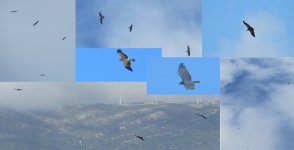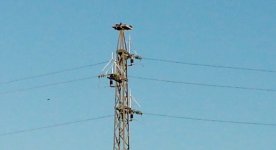rollingthunder; said:
I'm told that the migration finishes when the local Migres observers start to tuck into their lunch?
Laurie:t:
I think that's more of a sign that they are peckish and someone has turned up with something nice to eat.

I've had great close-range, eye-level afternoon views until the sun dips of eagles, Egyptian vultures, honeys and other stuff on the Trafico road and other places in good numbers, without trying in previous years. That's not a boast, just pull up and they were there. All you need is the weather.
I'm a fan of fewer, closer birds too, but the frustration on this trip, compared with all the rest, is that we are being treated to fewer, more distant birds. They are less in number and they are sky-high. The eye-level, close-range eagles, Egyptian vultures and honeys that you get with a good (but not too good) blow from the east are annoyingly rare this year.
This September so far has been strange. All the species are there, but the numbers of individuals of each are well down on normal.
Have a chat with the Migres observers. They are friendly and helpful, but remember that the volunteers that are assisting them are helpers and may not be able to respond in the same manner.







